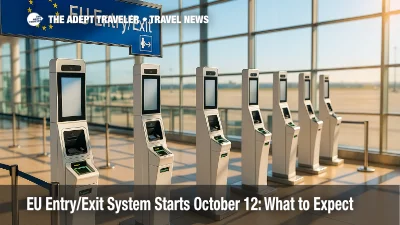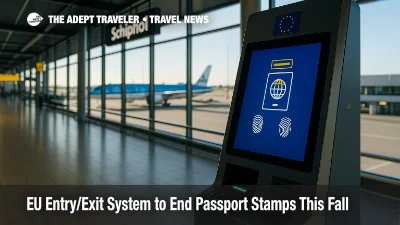European Travel Information and Authorization System (ETIAS)
The European Travel Information and Authorization System (ETIAS) represents a significant shift in how non-European Union (EU) citizens will travel to Europe in the coming years. Expected to be operational by 2024, ETIAS aims to enhance border security while streamlining the travel authorization process for over 60 countries whose citizens do not need a visa to enter the Schengen Area. This new system will affect millions of travelers seeking leisure, business, or medical visits within Europe. Understanding the scope, purpose, and application of ETIAS is crucial for anyone planning a trip to Europe.
What is the European Travel Information and Authorization System (ETIAS)?
ETIAS is an automated electronic system developed by the EU to monitor and manage travel to the Schengen Area. This area includes 26 European countries that have abolished passport and other types of border control at their mutual borders. The primary goal of ETIAS is to pre-screen visa-exempt travelers before they enter the Schengen Zone to enhance security measures and reduce illegal immigration and other threats.
Why Was ETIAS Created?
ETIAS was conceived in response to increasing security threats and the need for improved border management within the Schengen Area. The system seeks to address potential risks posed by travelers who do not require visas. By pre-screening these individuals, ETIAS authorities can identify and mitigate threats early, ensuring the safety and security of residents and visitors. The system also aims to streamline border crossing procedures, making travel to Europe more efficient and secure.
How Does ETIAS Work?
The ETIAS application is straightforward and user-friendly. Travelers will need to provide personal information such as their name, date of birth, nationality, and passport details. Additional questions might cover criminal records, health information, and previous travel history. The application process is expected to take about 10 minutes, with an approval turnaround time of a few minutes to a few hours.
Once approved, an ETIAS authorization will be valid for three years or until the traveler’s passport expires, whichever comes first. This authorization permits multiple entries into the Schengen Area, allowing stays of up to 90 days within a 180-day period.
Who Needs ETIAS?
Citizens of over 60 countries that currently enjoy visa-free travel to the Schengen Area will need to obtain an ETIAS before entering Europe. These countries include the United States, Canada, Australia, Japan, and Brazil, among others. It's important to note that ETIAS is mandatory for short-term travel purposes, such as tourism, business, medical reasons, or transit. However, it is not a visa and does not replace the need for a visa for travelers who plan to stay longer or work in Europe.
Impact of ETIAS on Travelers
For travelers, the introduction of ETIAS signifies an additional step in their travel planning process. Nonetheless, this step is relatively simple and convenient. Preparing for your trip now requires ensuring that you have a valid passport and applying for ETIAS well in advance of your travel dates. This precaution helps in avoiding any potential delays or rejections that could disrupt travel plans.
Moreover, the enhancement in security measures is likely to benefit travelers by providing a safer environment. By pre-screening travelers, the system reduces the chances of threats, making Europe a more secure destination for everyone. The convenience of a three-year validity period simplifies future travel plans, as frequent travelers will not need to reapply for every trip.
How ETIAS Enhances Border Security
ETIAS significantly boosts security through thorough data cross-checking against multiple EU databases, such as the Schengen Information System (SIS), the Visa Information System (VIS), and the European Criminal Records Information System (ECRIS). This exhaustive cross-referencing allows the identification of individuals who may pose a security risk before they even enter Europe.
The system also aids in preventing illegal immigration and human trafficking by flagging suspicious activities and providing border authorities with crucial information well in advance. The use of advanced technology and analytics embedded in ETIAS facilitates proactive decision-making, reducing the burden on border control resources and enhancing overall efficiency.
Steps to Apply for ETIAS
The ETIAS application process is designed to be simple and efficient, ensuring minimal inconvenience for travelers. Here are the basic steps involved:
- Online Application: Access the official ETIAS website or a designated app to start your application. Fill out the form with required personal, travel, and health information.
- Payment: Pay the processing fee, which is expected to be around 7 euros, using a secure payment method. Note that travelers under 18 and over 70 are exempt from this fee.
- Submission: Submit your application online. Most approvals will be instantaneous, but some cases may take longer if there is a need for manual processing or additional information.
- Notification: Receive your ETIAS authorization via email. Print a copy for your records and carry it with you when you travel.
Challenges and Considerations
While ETIAS simplifies the travel process for many, it may pose challenges for some travelers. Instances of mismatched information or discrepancies in the application may lead to delays or rejections. Therefore, accuracy when filling out the application is paramount. Additionally, technological accessibility might be a consideration for some individuals who are not comfortable with online systems.
Travel agencies and advisory services may need to adapt and update their offerings to assist travelers in navigating this new requirement effectively. From providing information to assisting with applications, these services will play a vital role in ensuring a smooth transition to the ETIAS system.
Awareness campaigns and informational resources will be essential in educating the public about ETIAS. As the system becomes mandatory, airlines and travel operators will also need to verify ETIAS authorizations before boarding, necessitating seamless coordination and communication across the travel industry.
Overall, the European Travel Information and Authorization System (ETIAS) represents a progressive step toward heightened security and efficient travel management within Europe. With its implementation, travelers can look forward to a safer and more secure environment, backed by robust pre-screening processes. As technology continues to evolve, ETIAS stands as a testament to the proactive measures that can be taken to ensure safe, seamless, and enjoyable travel experiences in Europe.
Cyprus Schengen Entry 2026 To End Long Stay Resets

EU entry/exit system starts October 12: what to expect

EU Entry/Exit System to End Passport Stamps This Fall

EU Entry Exit System Starts Oct. 12; ETIAS Delayed to 2026

EU Proposes €20 ETIAS Fee After Years of Delays

Understanding ETIAS: Europe’s New Travel Authorization System

